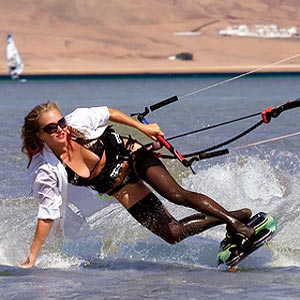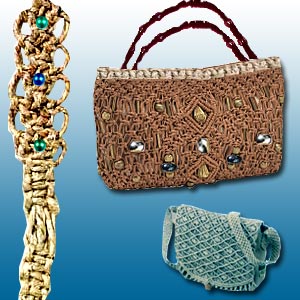Snorkeling

A family sport, snorkeling is very easy to learn and is packed with fun. 'Stay relaxed while in water' is the adage for snorkeling success. When you snorkel in a relaxed manner the sea animals do not feel they have a stranger amongst them and carry on their usual way. What better way to explore the wonderful world under water!
Snorkeling is a popular underwater activity at tropical resorts and scuba diving spots. Snorkeling is usually done at places where the waves are minimal; the water is warm and most of all where there is something attractive for snorkelers. Popular snorkeling locations include Coral Sea, Red Sea and the Caribbean Sea as these seas are warm and coral-rich.
Snorkeling fundamentals
Swimming at the surface of a water body is called snorkeling. People who wish to snorkel must equip themselves with swim fins, snorkel (a shaped tube) and a diving mask. If the water is very cool, a wetsuit is also used. Snorkeling does not require any special training; any person who wishes to indulge in this activity should know to swim and should learn to breathe through the snorkel. Snorkeling instructions by guides include:
- How to use the equipment
- What should the snorkeler look out for
- Basic safety
- How to prevent damage to fragile organisms like coral etc
People who get into this activity for the first time should feel comfortable while they wear the mask and while they breath through the snorkel. Few beginners get jittery while they get into the water with the mask and snorkel on. Beginners can practice snorkeling in shallow waters initially. There might be some initial discomfort with the mask and the snorkel. Snorkelers should learn to keep their face below the water surface and look through the mask. They should practice breathing through the snorkel while watching underwater attractions. The main advantage of snorkeling in shallow water is that a person need not burn energy for swimming.
Snorkel clearing
Snorkelers should also learn to clear the water off the mask and the snorkel. If the tube of the snorkel is logged with water, exhale through your mouth forcefully. This action will push the excess water out of the snorkel. Snorkels with built-in drainage valves are also available; this valve will push out the water. Small amounts of water can easily be pushed out with these valves.
Mask clearing
Clearing the mask is just like clearing the snorkel but can be a little more difficult with poor visibility. Lift your head out of the water and pull the front of the mask frontward; this will create a gap at the bottom of the mask thus clearing off the excess water. A few masks have a built-in purge valve, this functions just like the drain valve in the snorkel. A one-way valve that allows water only out and not in can be used by snorkelers to clear the excess water in the mask. They just have to blow air out of their nose and the water will be cleared.
Practice snorkeling
Snorkeling in open water without touching the bottom is the best way to learn snorkeling. To practice, the snorkeler should feel at ease while using the fins. Following these simple basics will help a person become a great snorkeler:
- He/she should be able to float repetitively in an upright position and should also move about while floating face down in water.
- The snorkeler should learn to respire consistently through the snorkel.
- Nearly all snorkelers use basic flutter stroke for underwater kick, this kick when used rightly transports the snorkeler swiftly.
- Snorkelers should kick slowly and steadily, the kicking pace should give them a comfortable feel.
- The fins should be submerged in water.
- Snorkelers will not feel tired if they maintain a steady and slow pace while kicking (20 kicks per minute).
- While swimming snorkelers should keep their hands by their side, this will decrease drag.
- Two common dives are head-first dive and feet-first dive. Between the two, feet-first dive is the easiest.
- Snorkelers who wish to stay underwater for long periods should take many long and deep breaths before they dive. This will help in removing carbon dioxide from the lungs.
Safety aspects for snorkeling
- Do not go snorkeling if you do not know to swim.
- Never go alone snorkeling.
- Amateurs should stay close to the shore so that they can get back to the shore lest they feel tired and exhausted.
- Before you venture snorkeling, study the areas that are safe and that are not. For e.g. tides can get dangerous as it can entrap a person.
- A floatation device like snorkeling vest or simple waist belt can help you retain your energy levels.
- If you wish to dive below the water surface regularly, make numerous short dives rather than one long dive.
- While snorkeling in cold water, use a wet suit to retain your body heat. Cold water can strip the body heat off a snorkeler.
- Maintain your distance from underwater animals. Generally sea animals do not harm others but if they are disturbed they may not like it.
- When snorkeling in shallow waters, sea bed like coral reef and other hard surfaces can injure a person.
- Be careful of outgoing tides, they are capable of sucking far into the sea.
Selecting snorkeling gear
Snorkeling mask: Select a mask that will fit you right. Masks that don't fit in perfectly can keep leaking and make you uncomfortable. Try the mask before you buy it. While checking the mask for fit, move your hair out of the way and move the strap away and push the mask tightly on your face. The mask should fit perfectly without any support. Other aspects you have to check in a mask are visibility, comfort and cost. Few masks have side glasses and provide a wider vision. Masks are priced between US$ 15 and US$ 80.
Snorkel: While buying a snorkel, ensure that the snorkel mouthpiece is soft and has flexible edges. The snorkel should fit your mouth perfectly. A variety of designs are available depending on the bore diameter and the length. Snorkels are priced between US$ 10 and US$ 40.
Fins: Snorkeling fins are not a compulsory accessory for snorkeling but fins do provide additional propel to the snorkeler. Fins are available as open-heel fins and full foot fins. Choose fins that fit you perfectly and firmly but tight fins can hurt the user and can cause blisters.
Snorkel vest: These vests are inflatable and provide better buoyancy while snorkeling but are not of use to those who cannot swim. Snorkel vests are priced between US$ 25 and US$ 50.
Mesh bag: This will be useful to store all the extras you carry underwater.
Sun protection suit: This suit is available for children and adults and offers protection against the harsh sunlight.
Sunscreen: Use a sunscreen with a 15 SPF to protect your skin from the harmful UV rays.
Underwater camera: This is ideal to capture some precious moments underwater.
Snorkeling equipment
- Soak the snorkeling equipment in fresh water regularly.
- Rinse the equipment well else the salt deposits can corrode the equipment. Salt crystals that are not cleaned well can cause holes in the equipment and damage the strap.
- Clean both the inner and outer surface of the mask with soap and water so that there is no fog formation in it.
- After every snorkeling trip, clean the equipment well. Check them for their safety before using them the next time.
Selecting a snorkeling spot
Various factors have to be considered while selecting a snorkeling spot. It is advisable to check with the local people for weather conditions and safety of the spot. Dive shops have plenty of information about the snorkeling spots. Most of the snorkeling spots are reachable through fishing boats. The ideal spot for snorkeling is calm sans currents.
Reef snorkeling
- Never touch the reefs. They look hard but are very flimsy and break away easily.
- Watch the corals but never touch them.
- Numerous holes in the reef can draw your attention - peep through them but never try to meddle with them as there are many animals that love to hide in these hideouts.
- Swim gently around the reef, if you kick it hard while swimming you might be harming the reef.
- If you kick in too much of sand while swimming near the reef, the sand will form a layer and prevent sunlight from entering the reef. This can cause harm to the reef growth.
- Remember reefs are living organisms and respect their lives too.
- Do not walk near the reef; sea urchin spines can hurt your feet.
Popular reef snorkeling spots
- Biscayne National Park, Florida
- Dry Tortugas National Park (close to U.S. Mainland)
- Virgin Islands National Park (Caribbean Island in St. John)
- Buck Island Reef, (close to St. John).
Top of the Page: Snorkeling
Tags:#snorkeling #reef snorkeling

Women Recreation Guide
Kitesurfing Gear
Wire Jewelry Making
Christmas Craft Project
Clay Pottery
Quilting Fabric
Importance of Hobby
Hobby Interest
Silk Painting
Doodling Interpretation
Calligraphy
Sudoku Tips
Coin Collecting
Scrapbooking Idea
Ikebana
Hobby and Craft
Valentine Day Crafts
Bead Craft
More on Hobby

How to Macrame
Origami Flower
Collectible Hobby
Stamp Collecting
Snorkeling
Hobby Photography
Thanksgiving Craft
Digital Photography Tip
Top of the Page: Snorkeling
Popularity Index: 101,316

